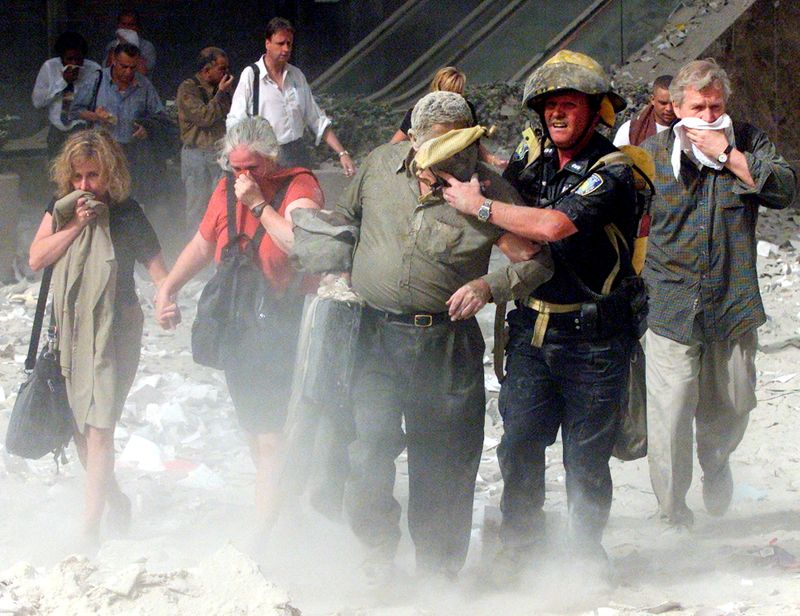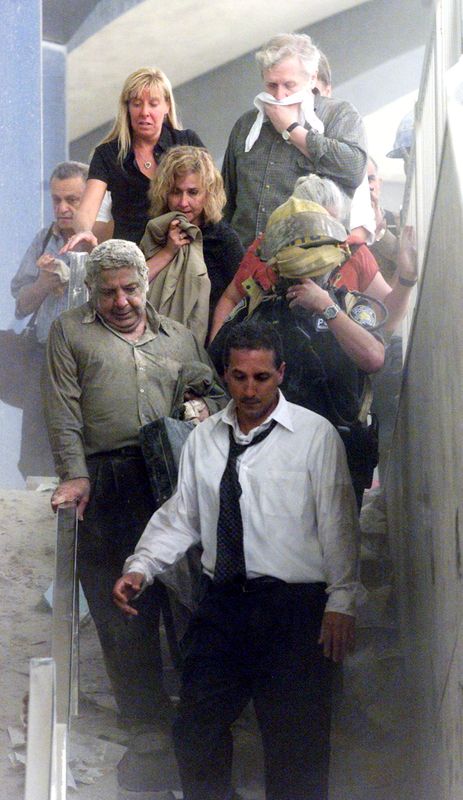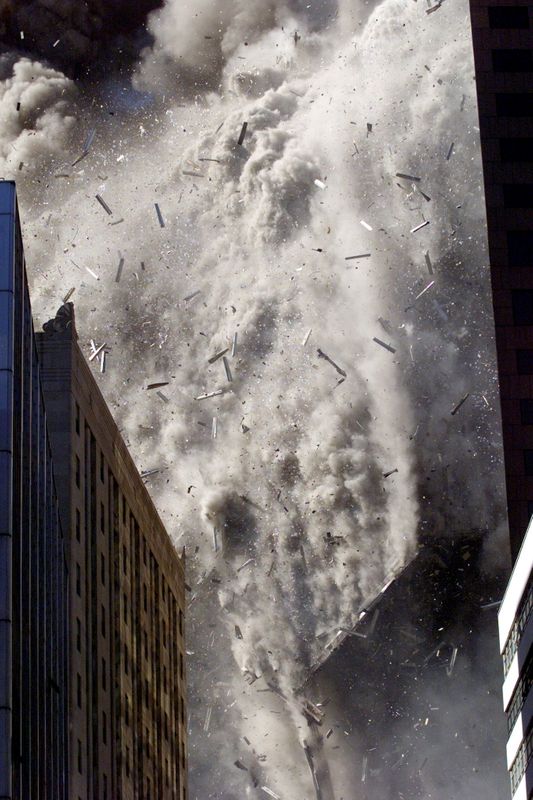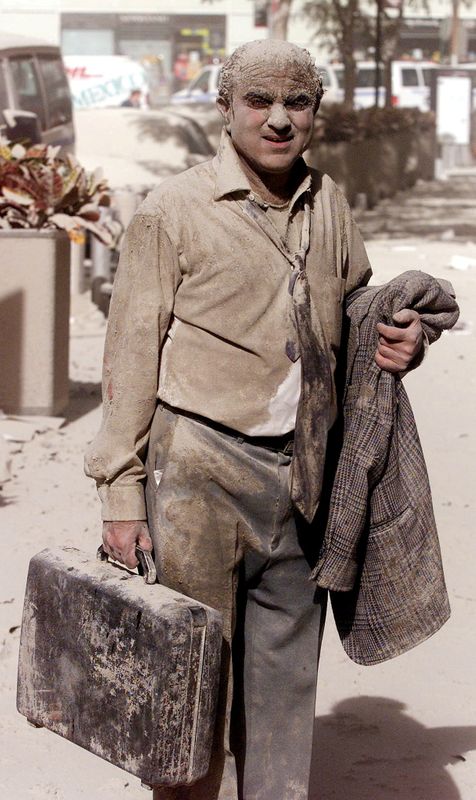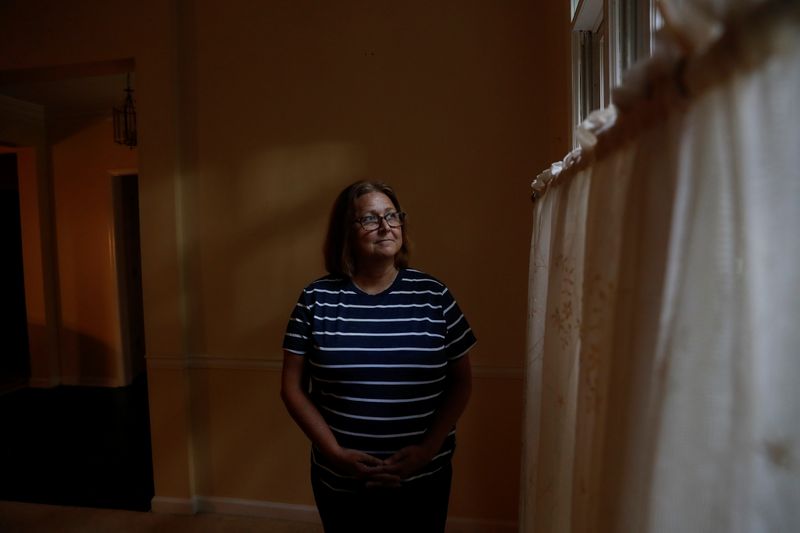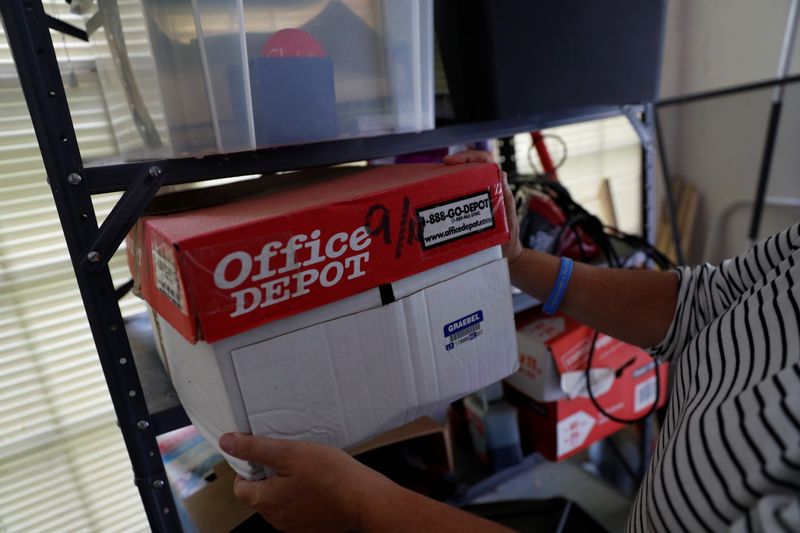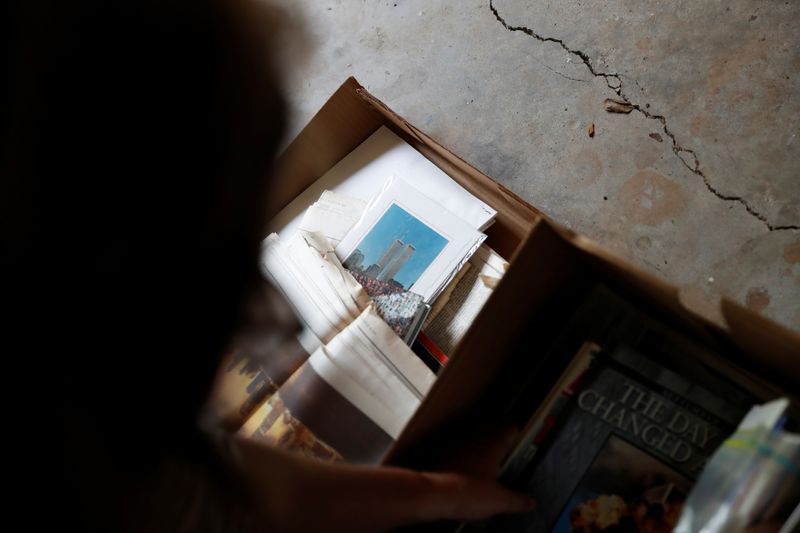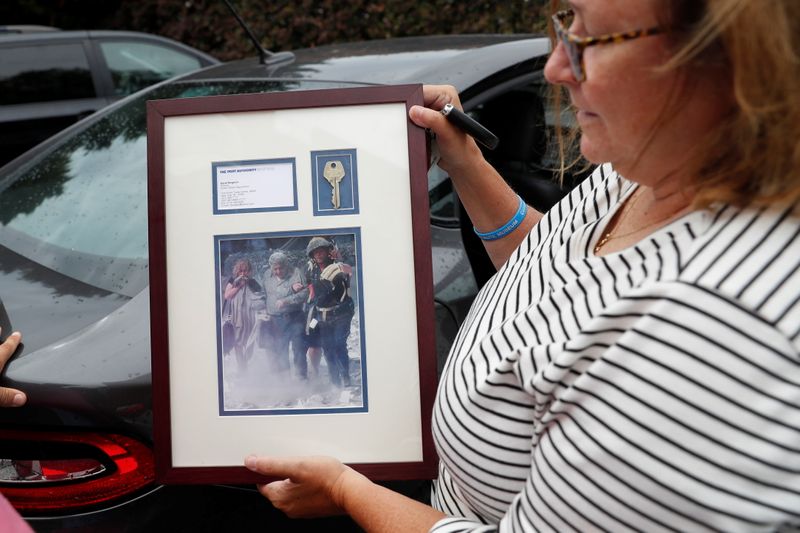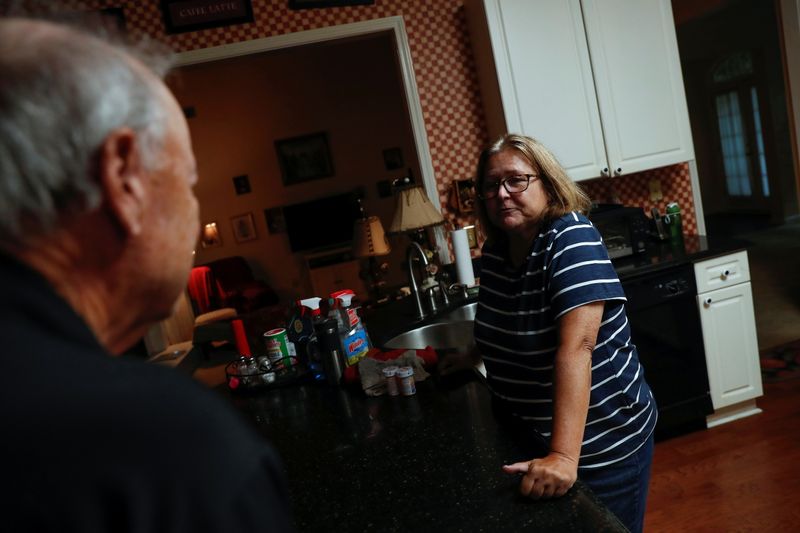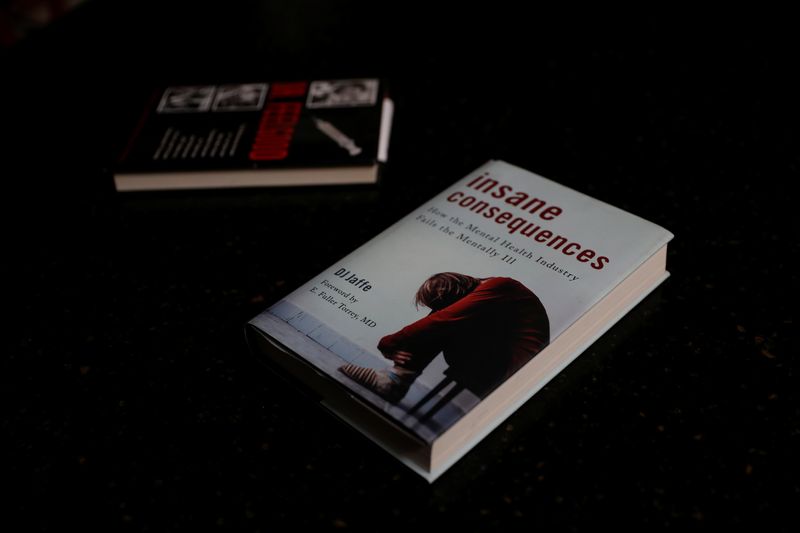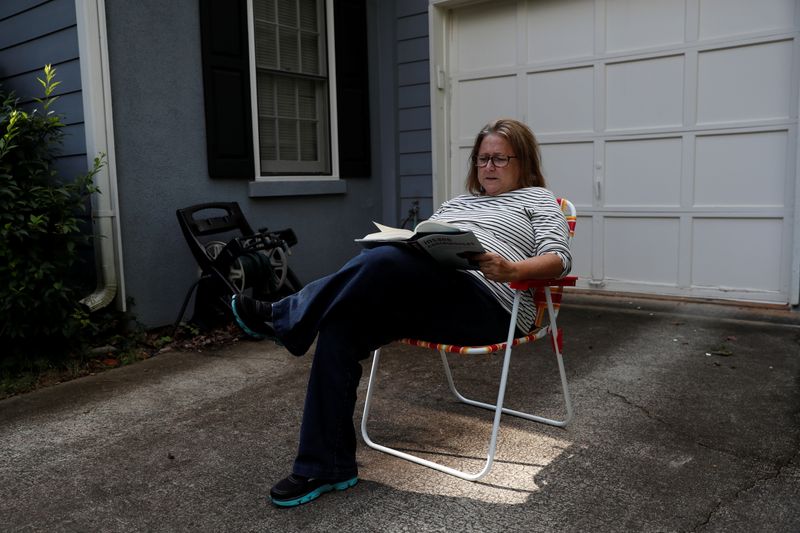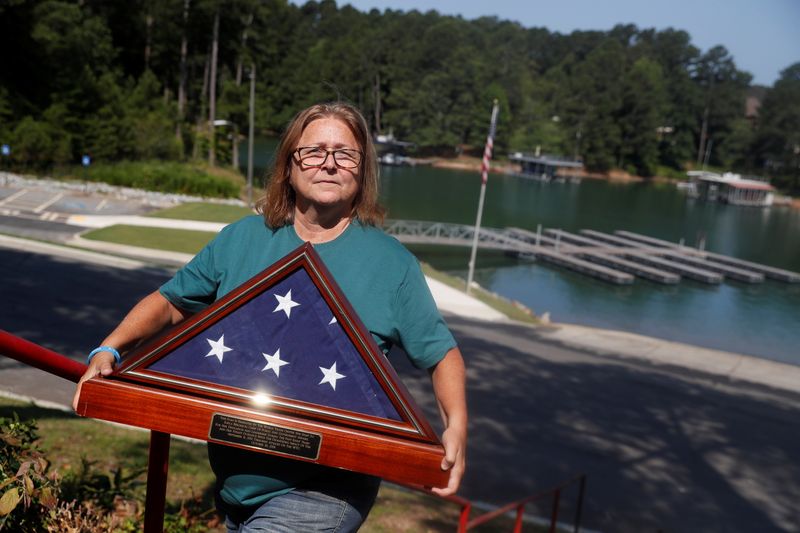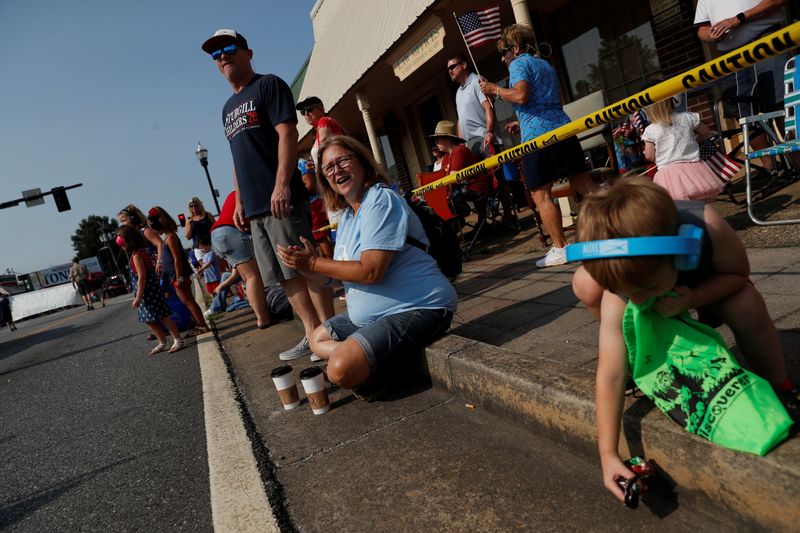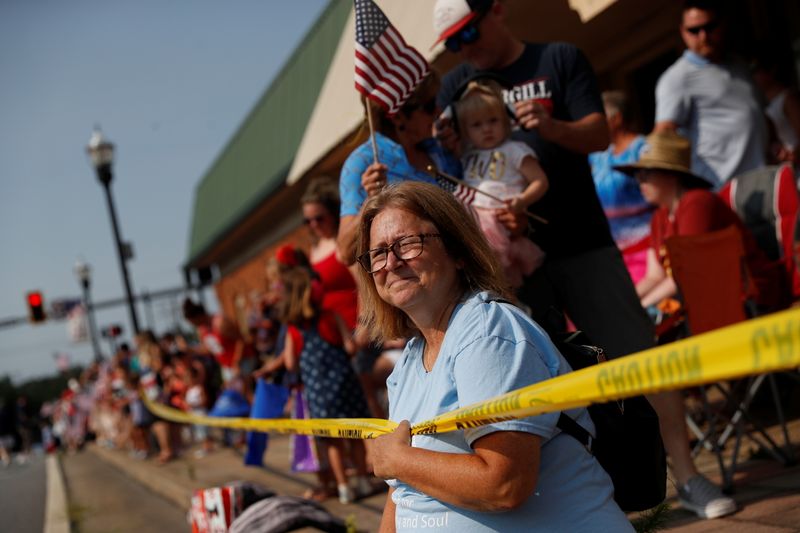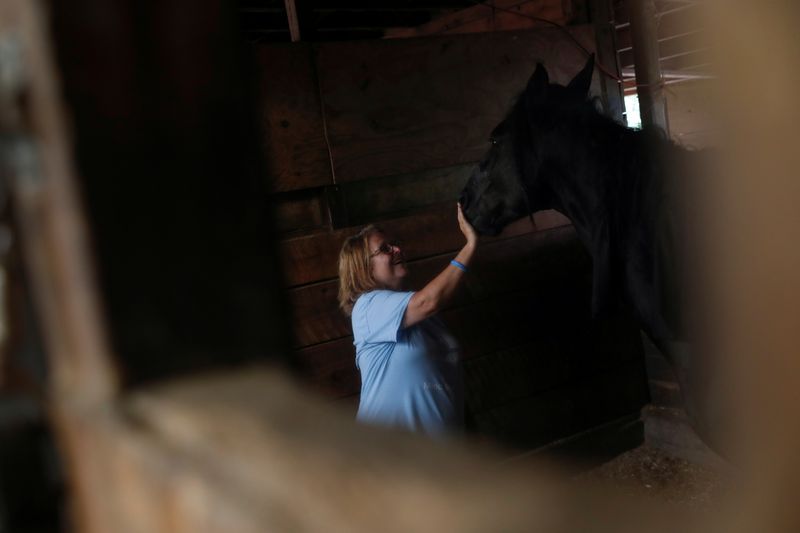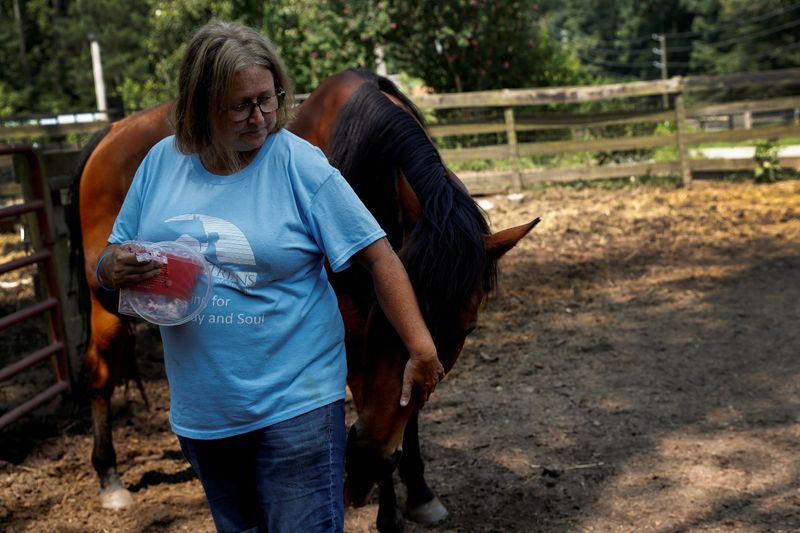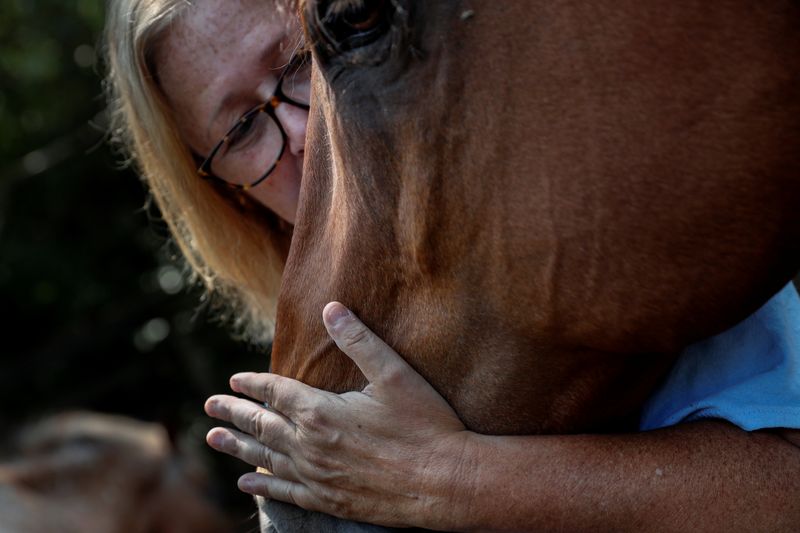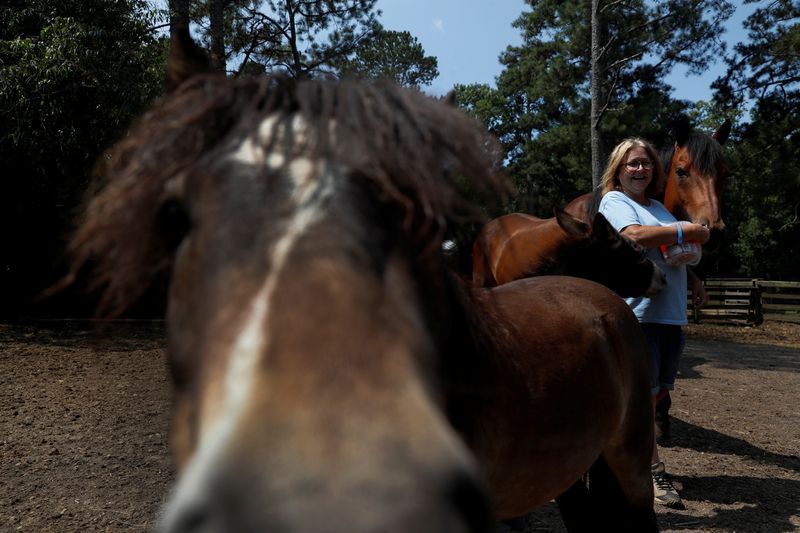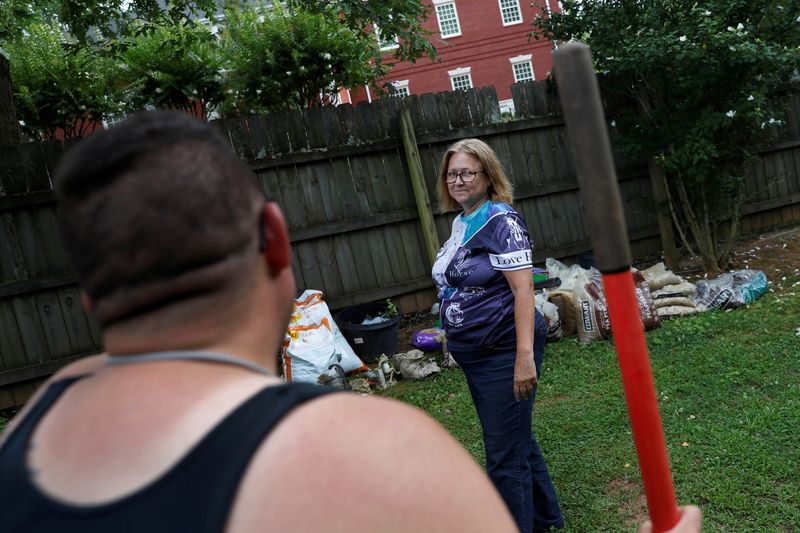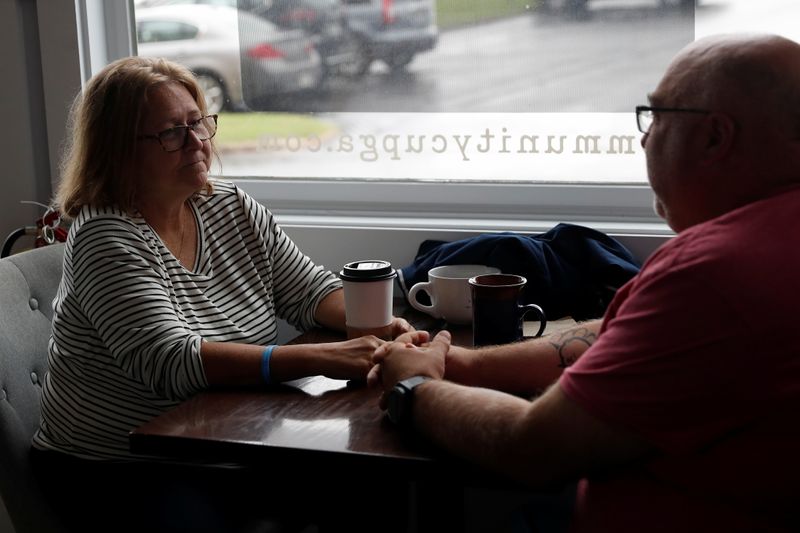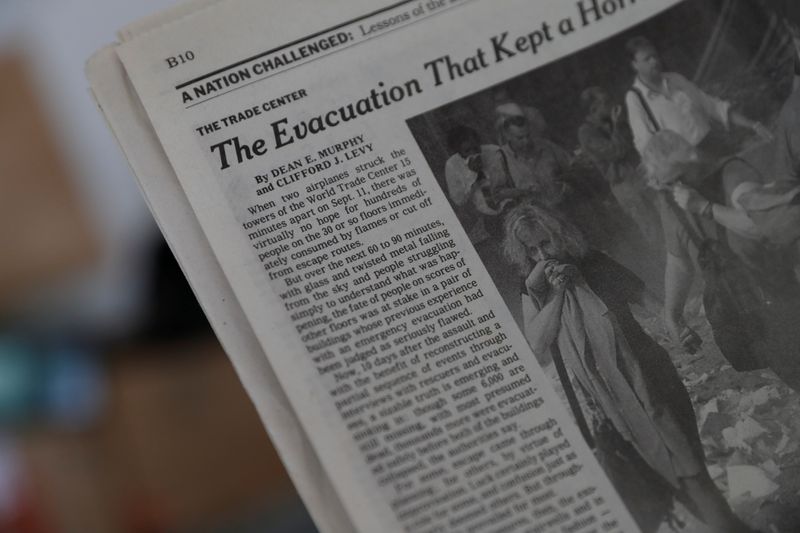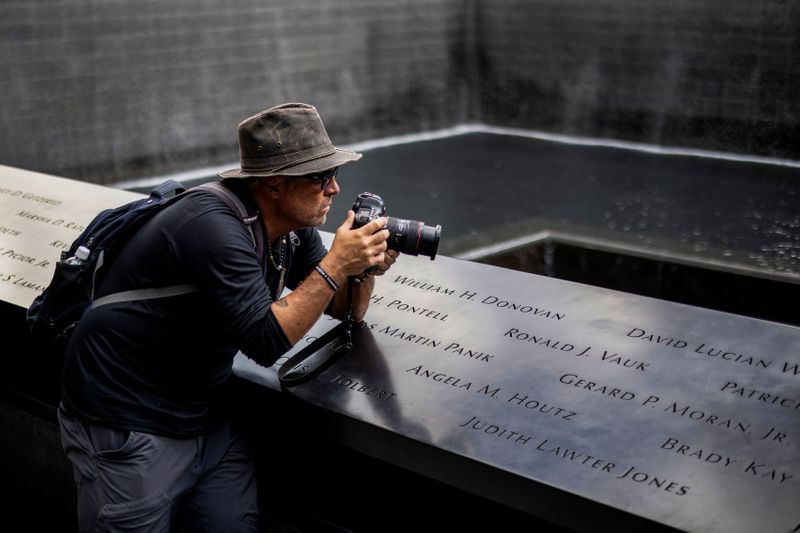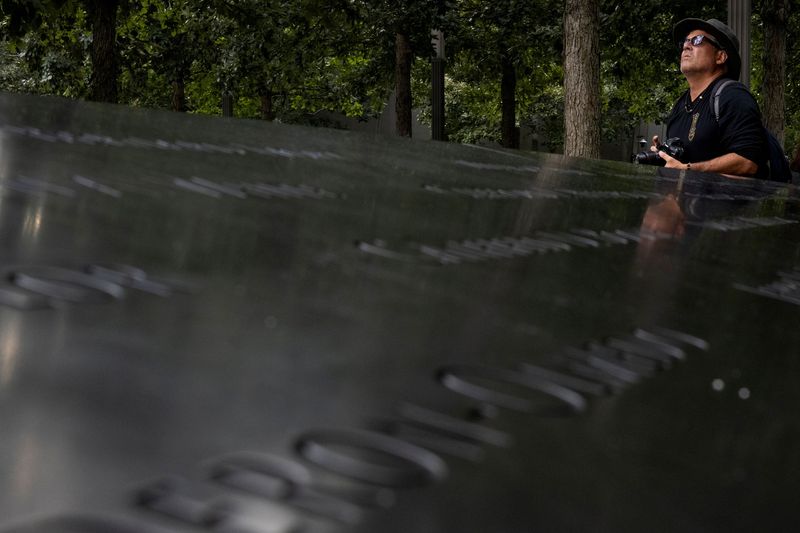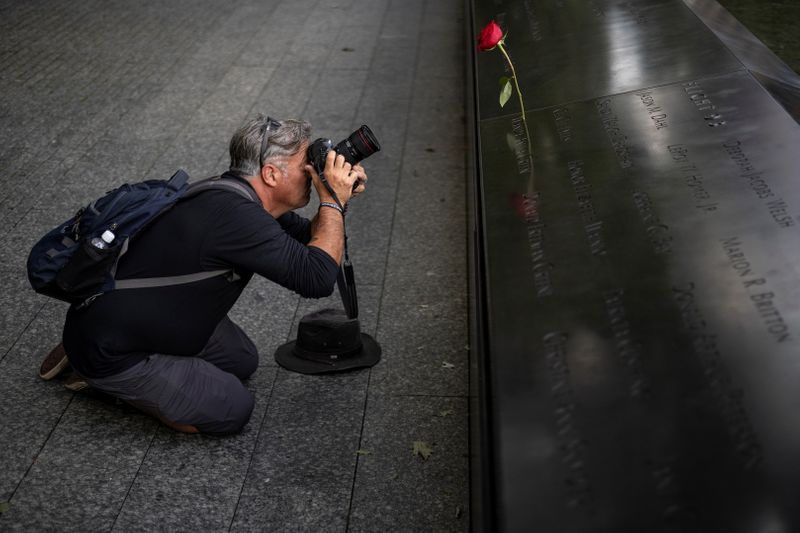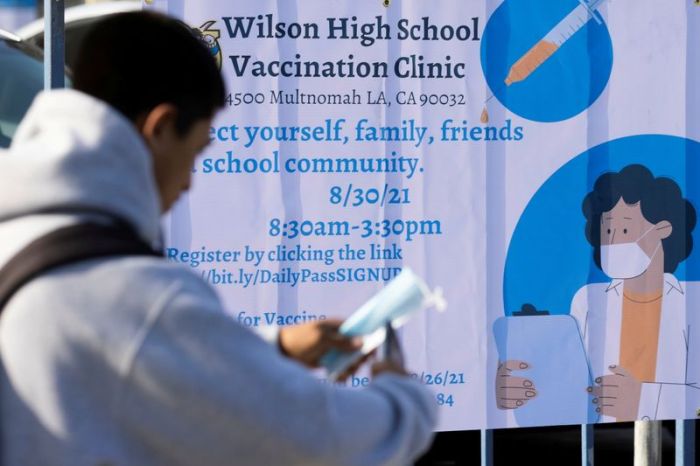NEW YORK (Reuters) – At 9:59 a.m. on Sept. 11, 2001, the World Trade Center South Tower fell. About 15 minutes later, photographer Shannon Stapleton scrambled over debris, peering through dust and smoke for pictures near the still-standing but crippled North Tower.
Stapleton, then a freelancer for Reuters, took a few frames of a group of people emerging from what remained of the building’s lobby. In the middle of the group, a blonde woman clutches a jacket to her face. The corners of her mouth are turned down, her eyes downcast.
Kayla Bergeron, head of public relations for the Port Authority of New York and New Jersey, which owned the buildings, had just made her way down 68 darkened and flooded flights of stairs. It had taken her nearly an hour to reach the bottom.
Just before leaving the stairwell, Bergeron remembers seeing a bright light ahead of her, and she was filled with hope that she would escape the building with her life. She stepped into the light, but couldn’t see anything, so thick was the dust and smoke from the South Tower.
That light she saw was the North Tower’s lobby. There, she heard a voice telling her to follow the footsteps in the dust. She stumbled her way along, following the marks left by others who had already escaped.
She didn’t see Stapleton take the pictures of her and the other dirt-caked survivors.
“At that point, I heard someone say run, run, run.” And she did.
Around the same moment, Stapleton looked at the screen of his digital camera – the first he had owned – and, pleased with his pictures, decided to deliver them to his editor. Minutes later, after the two left the area, the North Tower collapsed. Stapleton thinks that if he had been using his usual film instead of having the immediate confirmation of good digital images, he might have stayed on the scene and been there when the tower fell – and become another victim.
The PR executive and the photographer were connected in that shared slender moment and by deep psychological gouges they both say they’ve only recently come to terms with.
Twenty years later, they finally met, brought together by that picture. Both say they’re humbled by what happened to them on that day and what followed.
NEAR-CONSTANT ANXIETY
Although Stapleton’s picture was published throughout the world, Bergeron didn’t realize it existed for several weeks after the attack. Her sister happened to see it in People magazine, Bergeron says.
“She’s a big junkie on celebrity stuff, and she sees the picture and can’t believe it,” Bergeron recalls.
Bergeron kept working at the Port Authority for nearly six more years. She helped shepherd the organization through the immediate crisis and then to the rebuilding of the 1,776-foot-tall tower that now stands about a block west of the old Twin Towers.
“I was always high energy. Go, go, go. Never stop.”
When she left New York, she moved south to head public relations for the South Florida Water Management District, a key agency in the Comprehensive Everglades Restoration Plan, a multibillion-dollar project intended to reverse damage to the crucial wetland ecosystem.
But there was a near-constant anxiety that ate at her. And there were night tremors and flashes of light while driving.
She didn’t pause long enough to contemplate what was happening to her, she says now. And when the anxiety became too much, she self-medicated with alcohol, she says.
“I was like a bit binge drinking, OK? I knew something was wrong, but not what. If I would drink something, I wouldn’t feel that anxiety.”
In 2013, after her water management district job was eliminated, she busted through her savings, lost her West Palm Beach condo to foreclosure and was arrested in Parkland, Fla., for driving under the influence of alcohol. She lost her driver’s license for six months.
During that time, she says, her mother died of lung cancer in Georgia and she didn’t see her to say goodbye. Bergeron says she didn’t want her parents to know how far she had fallen.
And to some extent, she says, she didn’t want to admit it to herself.
After her mother’s death, she moved to Suwanee, Georgia, to be closer to her father. But her troubles weren’t over. After a boozy night in 2017, she drove into the back of another car and ended up in the Forsyth County Jail. She was arrested about a mile from her father’s home.
As part of a plea agreement, she entered a treatment program and was subsequently diagnosed with PTSD and depression, she says. As part of that treatment, she also got involved with Special Equestrians of Georgia, a program that uses exposure to horses as form of therapy. It has remained a huge part of her life.
“The first time I went to that farm, there was this big, beautiful mare,” she recalls. “Her name was Lily. I’m just talking, petting her. I’m not really paying attention. All of a sudden, she put her head right on my shoulder. And all of a sudden, all that energy that was wearing me down, it was like it was released into the atmosphere.
“I’m not a granola person,” Bergeron says. But the horse had a magical effect on her. “They have a sixth sense. There’s something magical about them that’s healing.”
Bergeron is now the program and outreach director for a non-profit called The Connection Forsyth, which works with local courts in Georgia’s Forsyth County to help people facing minor criminal offenses manage their addiction and mental health problems. Many are veterans who served in Iraq and Afghanistan after the 9/11 attacks. Many, like her, suffer from post-traumatic stress disorder.
DOCUMENTING DEATH AND DESPAIR
For Stapleton, the years that followed 9/11 were filled with professional success. In 2005, Reuters hired him as a staffer, and for the next 15 years, he traveled from one disaster or conflict to another. He rarely stopped to pause or reflect on that dark day, he says. He just kept going.
He documented Hurricane Katrina’s devastation of New Orleans in 2005 and the 2010 earthquake in Haiti. He worked in Lebanon during the 2006 Israeli invasion and in Iraq. He’s covered many horrific mass shootings, including the 2012 Sandy Hook Elementary School massacre that left 20 children and six adults dead.
Stapleton says he’s made a career documenting death and despair. He remembers riding on a motorcycle through the streets of Port-au-Prince in Haiti. A boy lay dead on the soft shoulder of the road, his head smashed in. His pockets picked. His shoes and socks stolen.
“You don’t forget these things. Little schoolgirls and schoolchildren walking over it like it’s nothing. Or in Lebanon, showing up when the U.N. workers got killed, and you know, that smell of … rotting bodies in bags, at 100-degree temperature, you don’t forget that.”
In the summer of 2018, he says, it all came crashing down. He could no longer cope with having witnessed so much death across the years, he says. When not working, he says, he became anxious around people and so retreated from even his close friends and family. At work, he couldn’t face photographing death anymore.
Eventually, he says, he couldn’t even work and took some time away from the viewfinder to seek counseling and therapy. It was a slow process, and when he returned to work, he avoided the office and his coworkers as much as possible. His boss, Reuters North America pictures editor Corinne Perkins, would meet him at restaurants around the city to keep tabs on him.
But he was on the mend, finally, he says. After struggling to find the right therapist, Stapleton was diagnosed with PTSD and severe depression. He takes prescriptions to treat his anxiety and depression.
Last year, he spent months on the road documenting how the COVID-19 pandemic was affecting the country. He drove from California to Las Vegas to Chicago and beyond.
One day, just before Christmas last year, he took a picture of an unresponsive elderly woman with COVID in a Chicago hospital. Her nurse held up an iPad so family members could say something to her. When he returned to the hospital the next day, her bed was empty. She had died overnight.
“I went out into the parking lot. I smoked like five cigarettes, bawled my eyes out and called Corinne, and she was crying with me. It hit me really, really hard. Death again and again.”
Perkins says she takes great joy in seeing Stapleton blossom again and laughs that he sometimes calls her his second mother.
“We’re getting better at understanding that it’s not just war zones that can impact your mental health,” Perkins says. “That the trauma of covering the pandemic or of getting COVID or worrying about your family, or covering the fires and having a shotgun pointed at you and being called fake news.”
A REUNION, 20 YEARS LATER
In late spring this year, Bergeron emailed Stapleton about the 9/11 picture. A French documentary maker had asked her about it.
“I contacted her, and it was like, we’d known each other our whole life,” he says.
Stapleton decided he wanted to meet her. In June, he went down to Georgia.
During his visit, Bergeron took Stapleton to meet her beloved horse farm, and then to the courthouse in Cummings, where she often works. It was the same courthouse where she pleaded guilty to her second charge of driving under the influence and where a judge ordered her into a court-administered treatment program.
There, Bergeron says she asked Stapleton to help her with an Army veteran who was struggling with PTSD and alcohol addiction after his time in Afghanistan. The veteran was in court for a probation hearing after pleading guilty to traffic charges, including one involving DUI, his fourth in less than a decade.
“I have been trying to get him out of himself,” she recalls. “He had a lot of issues.”
Stapleton agreed to try. He stepped forward and touched the man on his shoulder.
“Hey, brother. I’m Shannon, Kayla’s friend,” Stapleton says he told the man. “I just want you to know I’m here. [If] you ever want to talk to somebody, I can.”
Bergeron says she didn’t expect anything to come of it, and Stapleton went back to his hotel room for a nap. Not long after falling asleep, he was awoken by a call from Bergeron. The man, she said, wanted to talk to him. Stapleton got out of bed and drove 40 minutes north, back to the her office.
“Me and him, we had this deep, deep conversation,” Stapleton says. The U.S. involvement in Afghanistan was coming to an end. “He was in Afghanistan. So he’s seeing this whole thing collapse, and he’s seeing all his efforts go for naught.”
Stapleton isn’t sure that chat made a difference, but he says that at least the man opened up about his experiences, and that’s a start.
When Stapleton was visiting Bergeron, she says she offered a little advice on dealing with PTSD: “I told Shannon, ‘It’s therapy – therapy and medicine. This will be with you your whole life. It never goes away, but it lessens over time.'”
(Reporting by Maurice Tamman; editing by Kari Howard)

